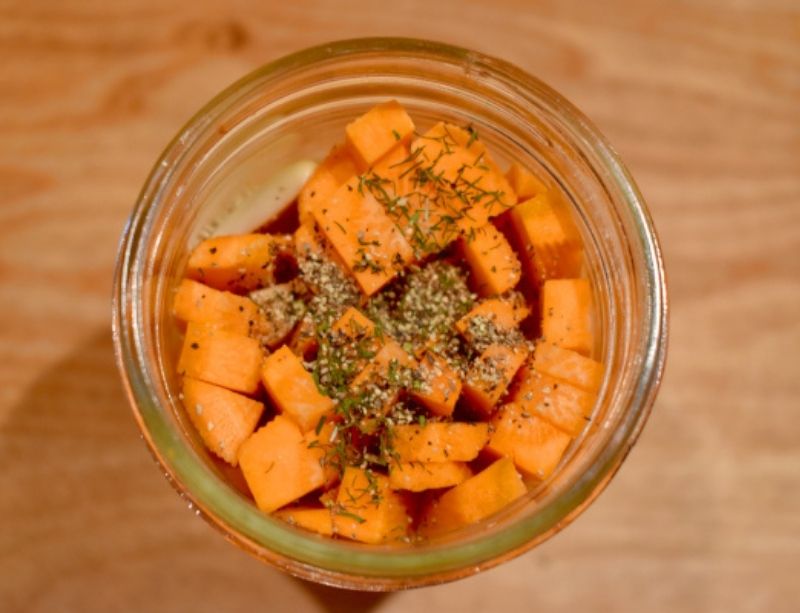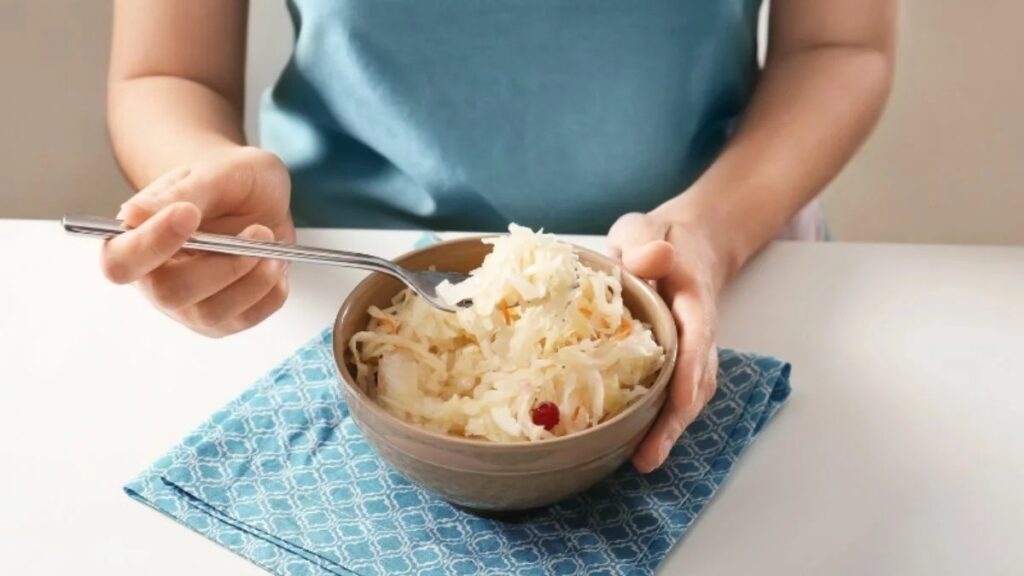Crazy about dill pickles but can’t wait for cucumber season? Satisfy your pickle craze with these fermented dill carrot sticks!
Be warned – you are very likely to find yourself at two in the morning in front of your fridge devouring these fermented carrots from the pot. Better to always have a jar on hand.
- Difficulty level: easy
- Type of fermentation: lactic
- Preparation time: 20 minutes
- Fermentation time: 3 to 8 weeks, to taste

The jars (or other containers) that you are going to use for fermentation are the basis of the recipe because the amount of added salt is calculated according to their volume.
This is an example that works well for this kind of recipe, but don’t hesitate to change the size and type of container (see all of our material for making fermented vegetables). You will only have to adjust the amount of salt proportionally to the new volume of the container.

Fermented Dill Carrots Recipe
Ingredients
- 900 g carrots (or enough to fill two 500ml jars)
- 20 g salt
- 2 to 3 cloves of garlic
- 2 teaspoons black pepper
- 1 to 2 tablespoons dried or fresh dill
- Enough water to cover the carrots
Steps
- Pour 2 teaspoons of salt into each glass jar.
- Add the pepper and dill.
- Peel the carrots and cut them into sticks.
- Stack carrots and garlic vertically until they are firmly packed and cannot rise up during fermentation.
- Pour in water to submerge the carrots (nothing should stick out).
- Close and shake the jars to dissolve the salt in the water.
- Make sure the lid is not too tight, so that the pressure can release during fermentation.
- Place the jars on a small plate to collect any excess liquid. Let them ferment 3 to 8 weeks, to taste.
Leave to ferment at room temperature for about 3 weeks (or more). Open the jar and enjoy! The carrot sticks should have a tangy taste and a crunchy texture that will make your pickles go green with envy.

The fermented carrots can be kept for 1 year in the refrigerator and even longer. However, over time the carrots will become increasingly soft, but will remain just as good to eat.
On salt: Brine and its percentages can cause many headaches for amateur fermenters. This technique is simpler and more precise at the same time: take the volume of the jar, then multiply by 2%. This gives the amount of salt to add: 500ml x 2% = 10g of salt. So, you need 10g of salt (2 teaspoons) for every 500ml!

